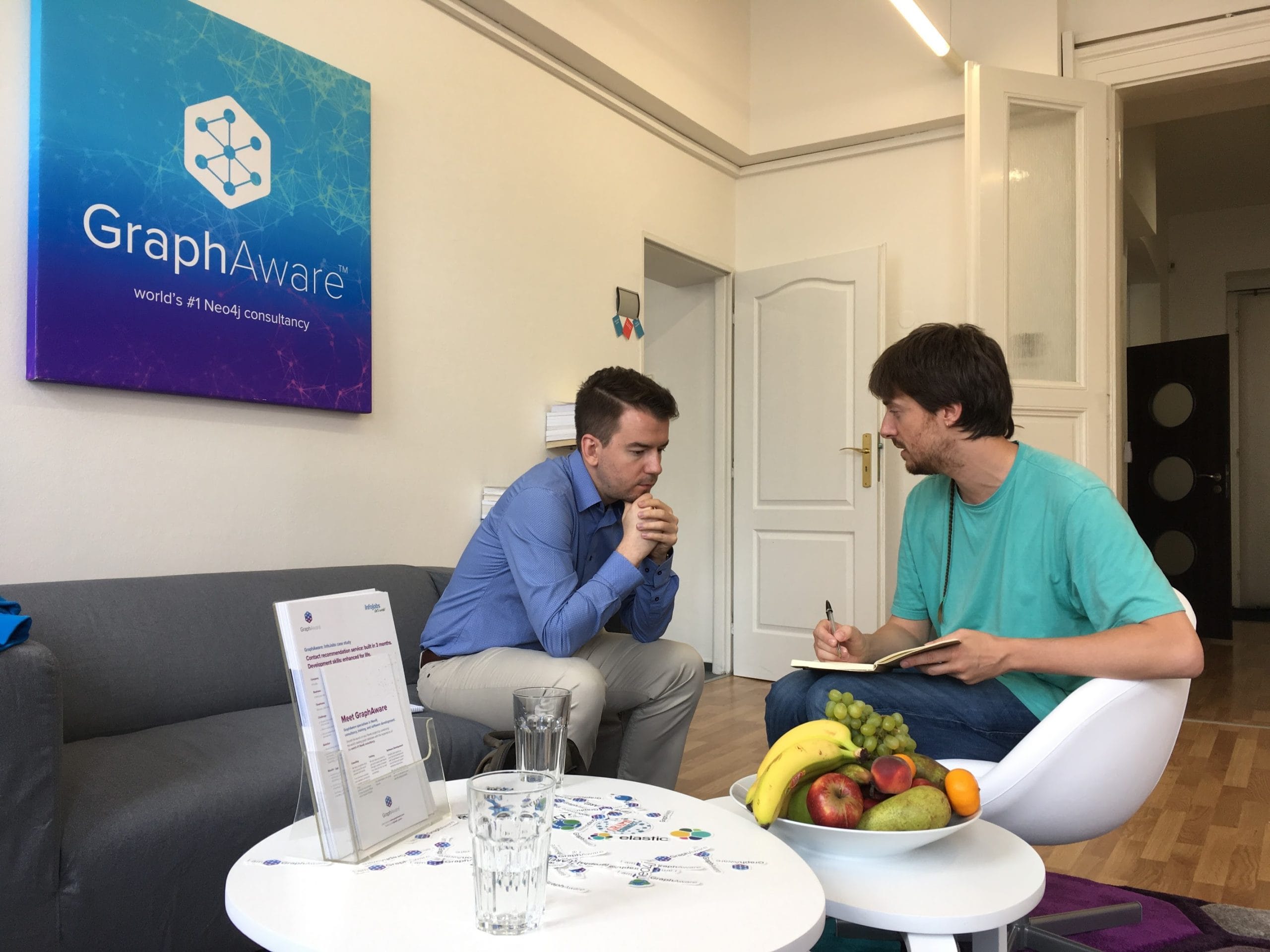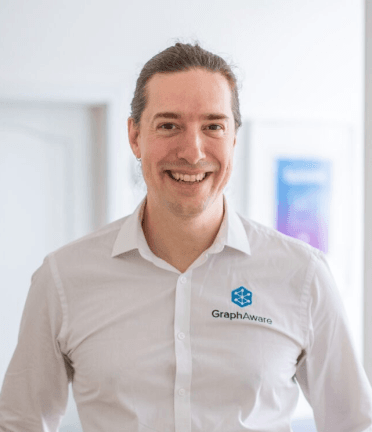Few years ago I met Michal Bachman and some other GraphAware heroes at GraphConnect in San Francisco. In those days I also had my job interview for the company. Surprisingly, for the first time since I started my journey in IT, I didn’t find myself explaining how I could be useful despite not having a strong background in engineering and software development. On the contrary, Michal was interested in all the things I could do because of my non-traditional curriculum, with a PhD in Cultural Anthropology, some experience in JavaScript graph visualisation, and a genuine passion for networks and graphs.
Any anthropologist lives and works between worlds. It takes the effort of developing a deep direct experience and understanding of a cultural context to be able to translate it into another, and become a bridge. There is a great potential in bridging contexts and communities, especially in supporting inter-communication and enabling interoperability. To do so, it is not enough to understand concepts and how they make sense in a particular culture, but also to be able to help people from a different cultural context to grasp that meaning. This is a first way to frame the job of anthropologists- becoming cultural bridges.
Nowadays of course Cultural Anthropology has become very sophisticated. Practitioners don’t speak anymore about cultures as they were closed systems. They were not really closed in the first place, but now the world is interconnected as never before and everything is intertwined together. Nevertheless, I think that it has never been simpler to find distinct communities of practice, more or less formalised, more or less overlapping, and they have never been so accessible.
I spent the last few years finding my way towards an international community of IT people, consultants, developers, administrators, and business professionals centered around graph technology. As any other anthropologist, I learnt my way into it, studying and practicing the language, like code for example, participating in the practices, such as Agile development, and understanding internal concepts, for example about GraphAware’s core business with knowledge graphs. I had plenty of opportunities to blend in, and I have been accepted and welcomed in this community.

I found my spot in the front-end developers/consultants group in GraphAware. And in this position I contributed to many interesting projects. We have built some really great pieces of software around the world in these years, and I could learn from very talented colleagues. We are at the forefront of the development of a very impactful mix of technologies (graphs, machine learning, natural language processing) and practices, which help to handle very complex problems in all sectors. And the best part is that I am surrounded by thoughtful and passionate colleagues. We come from different backgrounds and have different approaches, but we all care about what we do, how we do it, and how we do it together. It is never just work.
I never stopped being an anthropologist though. It is a kind of training that shapes you deep down. So I often find myself working “on the edge”. In many projects I play an active role in connecting business problems to development solutions. I strive to foster the organic emergence of a common language and a trusty environment between the clients and the consultancy team. Sometimes my ethnographic skills are useful to elicit important information during interviews or meetings, which help us describe clear requirements, disclose hidden opportunities, and deliver recognized value to our customers. After all, there is literally no limit to what can be achieved with a knowledge graph. We can manage the technology, so it could be argued that the greatest value lies in the ability to create and pursue a collaborative vision among colleagues, clients, and end users. Here is another way to think about what is the focus of anthropology- developing a collaborative narration in which the people represented can recognise their own voice.
We can manage the technology, so it could be argued that the greatest value lies in the ability to create and pursue a collaborative vision among colleagues, clients, and end users.
In some cases I help clients to express and articulate their needs enabling us to focus on what really matters to them. T his requires my attention to span across a full range of tasks and situations, from studying the client domain to analysing the metaphors used in meeting communications, from the design of features altogether to the prototyping of user interfaces and data models, from organising code to understanding collaboration patterns. I always look for the big picture, and try to connect all the available information into a meaningful whole. Here is another typical anthropological trait- this urge to reveal a connection to the whole refracted into the smallest detail. Or at least to connect concepts beyond their commonly perceived separations when those are too limiting. When as developers we are coding some application features, for example, we can do a better job and be more focused if we understand the reasons why we are doing it, the bigger purpose, what are the user motives, the client benefits. Well, I contribute to making those connections explicit.
All of this is always part of a bigger teamwork, where I play my role along with others. I am a consultant who asks a lot of questions and provides observations and interpretations. Sometimes too many – here is an area for improvement – but most of the time this helps our teams to move forward and to solve problems. Anthropological training helps me raise awareness on behavioral or conceptual patterns which would normally go unnoticed. For example on implicit values that we tend to replicate in our “normal” daily tasks. And there are some moments where this awareness is key, especially when uncertainty or ambiguity is high and problems do not have a clear solution, or when the usual solutions do not provide enough value. This is another very distinctive characteristic of anthropologists- the ability to promote positive change by shedding light on the processes of social production at work in a situation or context.
Last month my colleagues officially recognized the specificity of my role, and my title has changed from Senior Consultant to Graph Specialised Anthropologist. I am truly thankful to work in a company where this sort of change can happen, and one can grow into the position which enables one’s full potential. This change means that I will be spending less time developing and more time bridging contexts and disclosing value hidden in the connection with clients, end users, use cases, and concepts and practices. I look forward to improving my skills in those areas and to enrich my anthropological practice in the company. I am particularly looking forward to continuing the research on the meaning of graph specific concepts like what it means for users to explore a knowledge graph, what intelligence they expect, and what we can offer.
I am not alone in thinking Anthropology is “good for business”, and many researchers showed the value of this discipline for understanding consumer behavior or organisational culture, improving marketing or business relationships, and other topics (see, for example Sunderland and Denny 2007). In this post I pointed out some of the skills that anthropological training paired with other technical abilities can bring to projects and businesses of any kind, including as in my case IT:
- the ability to bridge cultural contexts, increasing interoperability
- the ability to foster the emergence of collaborative project visions and narratives among heterogeneous participants including internal teams, customers, and end users
- the ability to connect concepts beyond perceived separations, and help to develop a holistic view of a situation or problem
- the ability to raise awareness of patterns and implicit values that shape particular situations;
- the ability to research the meaning and the symbolic values of concepts and practices within communities, making it operational.
For me, a new project is a new immersive fieldwork experience. By combining all these traits in the Graph Specialised Anthropologist role I wish to have a successful and positive impact on our customers and their projects in the next few years. I will be in the perfect position to capitalise on this experience and help my colleagues at GraphAware to continue to lead innovation on knowledge graph based solutions.
References:
Sunderland, P. L., & Denny, R. M. (2007). Doing Anthropology in Consumer Research. New York: Routledge. https://doi.org/10.4324/9781315430171

